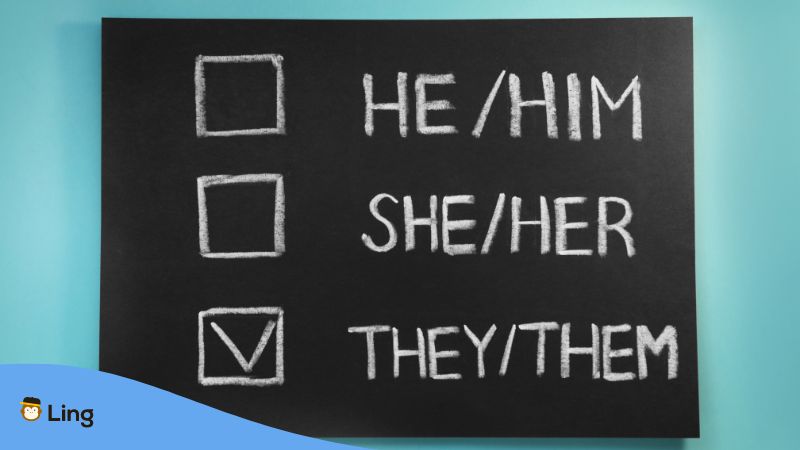So you’re here to learn about the Lao language, an official language of Laos, rich with unique elements like its distinct script and numerals. More specifically, you’re keen on understanding Lao pronouns.
Well, you’ve come to the right place.
Today, we’ll be exploring Lao pronouns in detail. We’ll look at the basics, understand their unique features, and see how they fit into the broader cultural context.
We’ll also provide some useful tips to guide you in learning Lao. So, are you ready? Let’s begin.
The Basics: Personal Pronouns In Lao
Personal pronouns in any language serve as keys to unlocking conversation. In Lao, they offer a unique insight into this beautiful country’s culture and societal norms.
So, let’s dive right into the pool of personal pronouns in the Lao language.
The First-Person Pronouns
First, when speaking about ourselves, the Lao language gives us a few options. Let’s check them out:
- ‘ຂ້ອຍ’ (khoy): This is the most common way to say ‘I’ or ‘me.’
- ‘ພວກເຮົາ’ (phuak hao): This is how you’d say ‘we’ or ‘us.’ It’s commonly used among friends or people of similar status.
The Second-Person Pronouns
When addressing others, you’ve got a handful of options too:
- ‘ເຈົ້າ’ (jao): This is the informal ‘you.’ You’d use this with friends, people of similar age or status.
- ‘ທ່ານ’ (than): This is a respectful way to say ‘you,’ often used when addressing someone older or of higher status.
The Third-Person Pronouns
Let’s now look at how to talk about others in Lao:
- ‘ລາວ’ (lao): This means ‘he,’ ‘she,’ or ‘it.’ It’s a handy word that covers all bases.
- ‘ພວກເຂົາ’ (phuak khao): This is how you say ‘they’ or ‘them.’
How To Choose The Right Personal Pronoun
So, how do you know which Lao pronoun to use? It all boils down to the context:
- Look at the age and social status of the person you’re speaking to. If they’re older or in a higher social position, go for ‘ທ່ານ’ (than).
- If you’re chatting with a friend or someone your age, ‘ເຈົ້າ’ (jao) will do just fine.

Beyond The Basics
Mastering the basics is a great start. But the beauty of the Lao language really shines through when we go beyond the basic personal pronouns.
This is where we start understanding the nuances, the cultural undertones, and the richness of this ancient language.
The Honorific Pronouns
In Lao, some pronouns carry an extra layer of respect. Usually, they are used in formal situations or when addressing people of high social rank or esteemed positions.
Let’s get to know some of these:
- ‘ທ່ານປີ’ (than pi): Used to address people of higher status respectfully. It translates to ‘sir’ or ‘madam.’
- ‘ທ່ານຫົງ’ (than hong): This is a more formal and respectful version of ‘you,’ often used in official or formal communication.
Plural Pronouns And Their Usage In Lao
Lao has plural pronouns that are quite unique. Here are some:
- ‘ພວກເຮົາ’ (phuak hao): This is the standard way to say ‘we’ or ‘us.’
- ‘ພວກເຂົາ’ (phuak khao): This pronoun stands for ‘they’ or ‘them.’
Remember that the concept of plural pronouns in Lao is different from English. While ‘ພວກເຮົາ’ (phuak hao) can mean ‘we,’ it’s often used to refer to ‘I’ or ‘me’ in a polite, less direct way.
The Use Of Ellipsis In Lao
Ellipsis is when Lao gets a little lazy, but in a good way. It’s all about efficiency. Why use extra words when you can do with less, right?
For example, a simple sentence like ‘I am going to the market’ could be trimmed to ‘Go market’ (‘ໄປຕະຫຼາດ’ – pai talat). The ‘I am’ is understood from the context.
Lao Language Pronouns In Different Dialects
When it comes to dialects, the Lao language has quite a few. The Vientiane Lao dialect, for instance, is considered the standard. Still, you might encounter slight variations in Lao pronouns when you venture into different regions:
In the Vientiane dialect, ‘you’ can be translated as ‘ເຈົ້າ’ (jao) in informal settings and ‘ທ່ານ’ (than) in formal ones. However, in northern Lao dialects, ‘ເຈົ້າ’ (jao) might not be as commonly used.
The Influence Of The French Language On Pronouns In Lao
Given Laos’s history as a French colony, there’s a sprinkle of French influence in the Lao language:
In formal situations, you might come across the French-inspired ’ທ່ານປີ’ (than pi) and ‘ທ່ານຫົງ’ (than hong).
These show the historical French influence on the Lao language and are often used in formal written Lao script or when addressing people of high status.

Tips And Cultural Context For Using Pronouns In Lao
So, you’re pretty clued up on Lao pronouns now, right? But knowing which words to use is just part of the story.
Let’s have some tips and cultural insight to help you use these pronouns like a pro.
Navigating The Social Landscape
In Lao, pronouns are like social GPS, guiding you through the twists and turns of conversation.
You’ve got to know your ‘khoy’ from your ‘than,’ your ‘jao’ from your ‘man.’ They’re not just words. They’re little signposts to status, respect, and relationships.
Handy Tips For Mastering Pronouns
Learning the words is step one. Next, you’ve got to get out there and use them. Listen to native speakers, try out the pronouns in conversation, and don’t be shy to ask for help.
Remember, when in doubt, opt for formal pronouns. It’s better to be too polite than not polite at all.
The Cultural Quirks Of Pronouns
In Lao, pronouns are a window into the cultural soul of Laos. They tell a story of respect, hierarchy, and relationships woven into everyday life’s fabric.
So, as you’re learning to speak Lao, you’re also getting a fascinating insight into the rich tapestry of Lao culture.
Learn Lao Pronouns With Ling!
Learning Lao pronouns is just the start. Here at Ling, we offer a world of over 60 languages. In fact, they’re just waiting for you to explore. Take your Lao learning journey to new heights right at your fingertips with the Ling app.
So, don’t miss out! Download the Ling app on Google Play and App Store today. Start your language adventure with us. Let’s speak Lao. Let’s speak the languages of the world!



































































